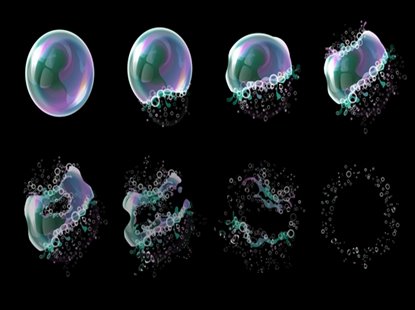Benefits of Using Defoamers to Enhance Operational Efficiency
Benefits of Using Defoamers to Enhance Operational Efficiency
Blog Article
The Duty of Defoamers in Enhancing Product Top Quality and Performance
Defoamers serve as vital additives that alleviate this issue, making sure smoother manufacturing operations while improving the useful and aesthetic characteristics of the final products. The choice of the proper defoamer can be vital to attaining optimal results, elevating essential questions about solution compatibility and performance metrics that warrant additional expedition.
Recognizing Defoamers
Recognizing the function of defoamers is important for preserving item quality throughout different markets. Defoamers are chemical ingredients created to minimize and prevent the formation of foam in liquid systems, which can detrimentally impact processes such as blending, loading, and surface area tension. Frothing can result in ineffectiveness, product problems, and compromised aesthetic appeal, making defoamers a critical component in manufacturing operations.
In commercial applications, defoamers help to enhance item consistency and security. In the paint and finishings industry, foam can conflict with the application procedure and the final finish. Similarly, in food and drink manufacturing, extreme foam can impede bottling and packaging effectiveness (defoamers). The reliable use of defoamers not just makes sure smoother manufacturing procedures however likewise adds to exceptional product performance.
Furthermore, the selection and formulation of a defoamer have to line up with certain application needs, such as compatibility with other ingredients, efficiency under varying temperature level and pH conditions, and possible regulatory constraints. Ultimately, recognizing defoamers' functions and their importance in various formulas is crucial for enhancing production and ensuring the finest end products.
Kinds Of Defoamers
Defoamers can be categorized right into several types based upon their structure and mechanism of action. The key types consist of silicone-based, non-silicone natural, and inorganic defoamers.
Silicone-based defoamers are amongst the most effective, mostly due to their capacity to spread out quickly on the fluid surface area and interrupt foam formation. Their one-of-a-kind chemical framework permits exceptional security, making them appropriate for high-temperature applications and atmospheres with varying pH levels.
Non-silicone natural defoamers, commonly made up of fatty acids or all-natural oils, are valued for their biodegradability and lower poisoning. These are usually used in food and beverage applications where safety and security and ecological effect are critical.
Inorganic defoamers, that include materials like talc or calcium carbonate, act by enhancing the thickness of the liquid, thereby decreasing foam stability. They are typically used in industrial processes where compatibility with various other materials is not a problem.
Each kind of defoamer has unique advantages and restrictions, enabling for tailored remedies depending on the details foaming concerns encountered in numerous applications. Understanding these differences is crucial for enhancing efficiency and achieving wanted item top quality.
Applications Across Industries
Countless sectors take advantage of defoamers to improve product high quality and functional performance. In the food and drink sector, defoamers are essential in procedures such as developing and milk manufacturing to avoid foam development, which can cause inadequacies and product disparity. By managing foam, producers can make sure far better yield and a more uniform item.
In the pharmaceutical sector, defoamers play an important role in the useful link formula of fluid drugs, where too much foam can hinder blending and precise dosing. Their usage aids keep the honesty of the formulations and promotes smoother production processes.
The paint and coatings market additionally depends on defoamers to enhance the performance of products throughout application. By lessening foam, these ingredients make sure a smoother coating and boost the aesthetic top qualities of the end product.

Advantages of Utilizing Defoamers
While the application of defoamers varies throughout markets, their advantages constantly improve product top quality and procedure efficiency. One substantial advantage is the reduction of foam formation throughout producing procedures, which can or else cause production hold-ups and inconsistencies in product quality. By minimizing foam, defoamers enable a smoother circulation of materials, facilitating more effective procedures and decreasing the chance of devices malfunctions.
In addition, using defoamers can boost the appearance and appearance of end products. In fields such as coverings, paints, and food handling, too much foam can compromise the aesthetic looks and total quality, while the proper defoamer application makes certain a consistent coating and desirable features. Furthermore, defoamers can add to cost financial savings by lowering waste during manufacturing and maximizing the usage of raw materials (defoamers).

Choosing the Right Defoamer
Choosing the ideal defoamer is essential for optimizing manufacturing procedures and guaranteeing product top quality. The selection of defoamer affects not just the effectiveness of foam control yet also the overall performance attributes of the end product. Factors to take into consideration include the type of application, the chemistry of the solution, and the environmental conditions under which the product will be utilized.
Different sectors might require specific defoamer kinds, such as silicone-based, organic, or polymeric defoamers. Understanding the compatibility of the defoamer with the main active ingredients is necessary to prevent unfavorable reactions that might compromise item integrity. In addition, the defoamer's effectiveness in numerous temperature levels and pH levels need to be assessed to make certain regular efficiency.
Checking the defoamer in small applications can offer valuable insights into its efficiency and viability. Factor to consider of governing compliance, especially in food, pharmaceuticals, Our site and cosmetics, is vital in selecting a defoamer. Inevitably, a comprehensive assessment of these aspects will certainly cause the option of a defoamer that not just manages foam properly however also boosts the high quality and performance of the last item.
Conclusion

In final thought, defoamers are important additives that dramatically boost item top quality and efficiency across numerous sectors. The tactical selection and application of defoamers lead to cost financial savings, enhanced source usage, and enhanced consumer fulfillment.
Frothing can lead to ineffectiveness, product flaws, and endangered aesthetic allure, making defoamers a critical element in making procedures.

Report this page